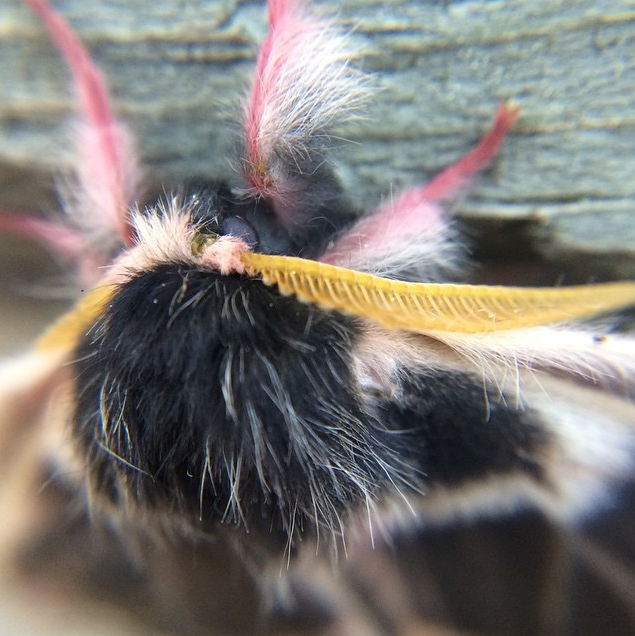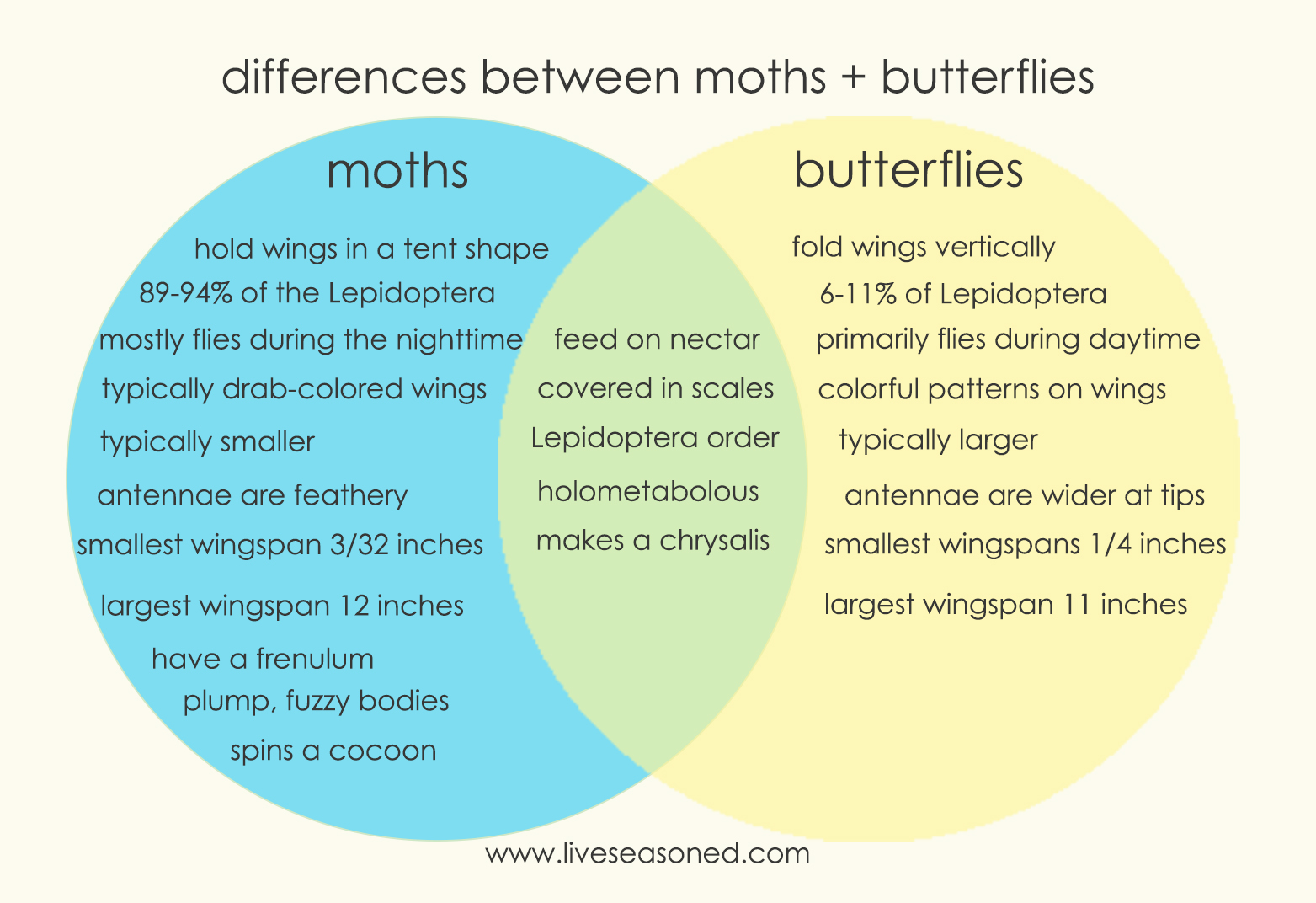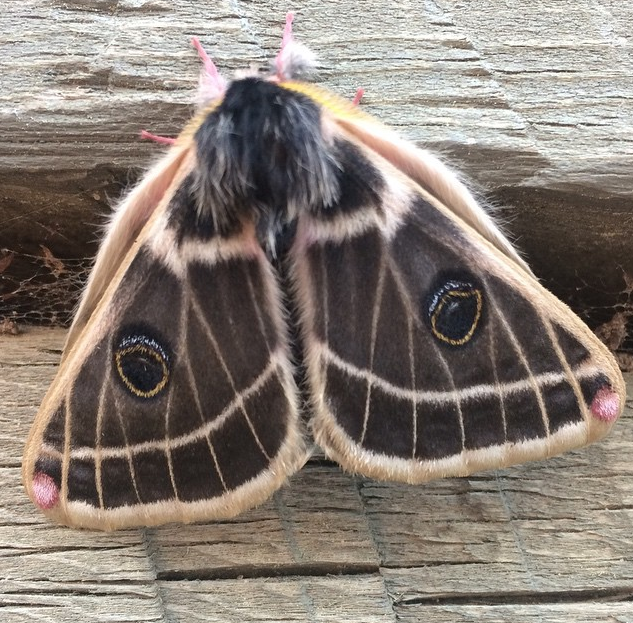Dudes! It’s National Moth Week! We’re treating this week as an opportunity to educate ourselves and others (you!) about the wonderful world of moths. I hope you’ll read along this week and spread the news. National Moth Week is a celebration of one of the most diverse and successful organisms on earth. Scientists estimate there are anywhere from 150,000-500,000 moths on earth. If I could do one thing to celebrate National Moth Week, it would be to trek into the rainforest, set up a white sheet, shine a spotlight on it and watch them flock to it, but unfortunately my rain forest moth-ing dreams must wait. I am going to try to make time to do that aforementioned activity in my backyard though. National Moth Week is a great time to become a citizen scientist and collect data. I might not get a glimpse of an Atlas Moth, but maybe I’ll see a Luna.
Do you ever feel like moths are the ugly cousin of the butterfly? Maybe it’s just me, but it seems like everyone loves a pretty butterfly, but when a moth flies by at night people start ducking and swatting. Why is that? Is it simply because of the day/night difference? Are we just scared of the unknown and since we can’t really see the moths we’re assuming their enormous winged insects out to get us? Or is it the way they swarm to our reading lamps and pester the heck out of us? Confession: I was once a moth hater. I grew up in the country, where we enjoyed our summers with the windows wide open no matter how many holes could be found in the screens. Once night fell and nothing but wide-open, dark fields surrounded the house, the moths would flock to our porch and eventually any hole they could find to come in closer to the light. You couldn’t read a book, knit a sock or work on the computer without getting dive-bombed. It was annoying to say the least.
Once I left home and lived in apartments sans bugs, I developed a more loving relationship with crickets, moths, spiders and such. I would trap and release instead of stomping or swatting them. Then came my obsession with found framed insects and a true love of all creepy creatures developed. I’m going on seven years of insect loving. I realized the more you know the more you appreciate them so we’re starting off National Moth Week with a venn diagram of the differences and similarities of moths and butterflies.
Moths and butterflies have a lot in common, both belong to the order Lepidoptera (from the Greek lepis meaning scale and pteronmeaning wing). Moths and butterflies are both covered with scales, which are actually modified hairs. You know when you catch a moth and a powder rubs off on your hands? Those are the scales! Don’t worry though, you aren’t harming the insects, both moths and butterflies shed their scales and form new ones. I found it pretty amazing that butterflies only make up 6 to 11 percent of Lepidoptera order, while moths make up a whopping 89-94 percent of the Lepidoptera order. Go moths! Moths and butterflies are both holometabolous meaning that they undergo a complete metamorphosis from egg to caterpillar to chrysalis before transforming themselves completely into their flying adult forms. Both insects eat nectar from flowers, as wells as mineral-filled standing water and the juice from rotting fruit. The distinction between moth and butterfly is often blurred, but often times it deals with anatomy and behavior. There are certainly exceptions to the rules, but in general it goes like this:
- Moths tend to hold their wings in a tent shape, folded to cover their abdomens, while butterflies usually rest with their wings folded vertically along their back.
- Moths usually have feathery antennas, while butterflies’ antennas are wider at the tips, shaped kind of like clubs. Moths also tend to have furry bodies, but not always.
- In general, butterflies are larger and have brighter patterns on their wings, but as you know, this isn’t always the case. Sometimes moths steal the show, like the Atlas moth, which could have a wingspan of up to 12 inches.
- Moths are usually smaller and have duller patterns, which allows them to blend in brilliantly with their surroundings.
- The most widely known difference is probably their activity and feeding behavior. Butterflies are diurnal or active during the day, whereas moths are nocturnal. Although there are certainly daytime moths and butterflies that are primarily active during dawn or dusk.
- Unlike butterflies, moths have a frenulum, which is a wing-coupling device. Frenulums join the forewing to the hind wing, so the wings can work in unison during flight.
- Moths also tend to spin cocoons around their chrysalis, but you won’t see that with butterflies.
Hopefully you gleaned a thing or two from this quick moth vs. butterfly study. I know I did. I’m excited to dive head first into National Moth Week. It’s movements like these that really spur an interest in kids and adults alike. Who knows, the next moth expert could be your tiny tyke, so be sure to do some moth-centric activities this week and all summer long!



